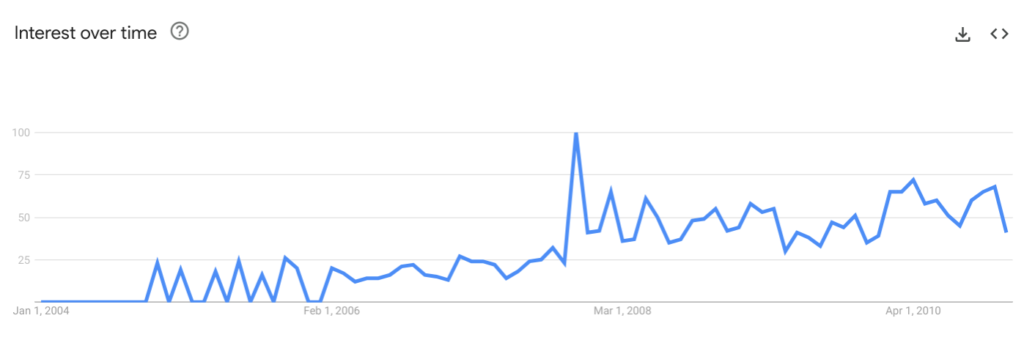The Challenged Chart – Part 4 – On The Generations
At a fundamental level the question of generations has to do with the differences in the position of planets during the era of their birth. Those planets are ever in motion and create patterns which bestow the people born to that time a unique signature that comes to define how they experience and impact the world throughout their lives. The different patterns set the rhythm of life while the sign placements of the outer planets – the dark luminaries – set the tone of the experience. For most generations this produces a mix of positive and negatives like we saw in the last chapter, and on occasion it produces a rather smooth melody overall, as we will see when we discuss the Generation With No Name. Then there are the times when the planets combine into what seems to be a cruel trick upon an unsuspecting group for whom life will inevitably be met with confusion, errors, and folly. Such is the plight of the Millennial.
The Millennial Generation consists of those born between late November of 1982 and the middle of January in 1996. As they were first being discussed as a unique generation in the popular awareness they carried the tag of “Generation Y,” because they came after the last group anyone paid attention to, “Generation X.” As the 1990’s progressed their title was adjusted to the “Millennial Generation” because the first of this cohort would be the people turning 18 years of age at the turn of the millennium, an event that we all considered to be a big deal at the time for some reason. It was in the mid-2000’s when the “Millennials” became a very hot topic of discussion as they began to enter the workforce and made their distinct presence known in the adult world. They generated enormous chatter at this time as the older cohorts found their behaviors and manners to be wildly divergent and novel from that which they were used to.

By the time 2007 came along the oldest Millennials were 25 years old (the real demarcation point of adulthood in American society) and the endless discussions of this group were becoming obnoxious and tiring. Some of this can be attributed to their sheer size – in the United States this was a much larger generation of children than had been produced since the 1950’s – but mostly it was because they were so distinct. This distinctness was worn as a badge of pride by this cohort – surely enjoying all of the attention – but it was not a distinct impressiveness which got the older cohorts talking, rather it was an almost inexplicable ineptness at dealing with the world as they found it and the consequences thereof. All of this press was about people trying to figure just what the deal was with this new generation, and their search to find a way to make them fit into the world they were inheriting. Decades later it is safe to conclude that we never succeeded. The more interesting questions are: did they? and why not?
To better understand this unfortunate group of scallywags let us first examine the planetary combinations which produced their generation:

This slice of the full generations matrix (available in the first Technical post in this series) zooms in on the Millennial portion. The beautifully drawn black lines are meant to draw your eyes toward the core of the group, highlighting the fact that this is a very consistent age during which Neptune (Capricorn) and Pluto (Scorpio) were almost entirely in their same positions. Much discussion by astrologers on the topic of “Millennials” has focused on the position of Pluto in Scorpio, but I consider that to be secondary to the more prominent and generation-defining pattern. That is the co-presence of Uranus and Neptune in the same sign – first in Sagittarius but mostly in Capricorn. It is this Capricorn signature which points us to the core of the “Millennial Question” and how to understand them. Further, the unfortunate outer planet sequence of all three subdivisions of the generation is necessary to consider:

With this technical data in hand we can proceed to answer the old question of “Exactly what is the deal with Millennials?”
In my estimate it is the long transit of Neptune through Capricorn that most commands our attention and the later addition of Uranus to Capricorn which points the way. Capricorn is the cardinal earth sign, ruled by Saturn. It is the sign where the boundaries of the terrain are understood and acted upon. When the Sun is in Capricorn there is a clear and bright light shone on this area, producing people who excel at figuring out the situation they are in, the rules of the game, and pursing them. Think of the goat climbing along a sheer cliff-face in apparent defiance of gravity. That goat knows the shape of the wall, knows precisely its capability, and is motivated to get to the top of the cliff and when the Sun is in Capricorn, it invariably does.
Capricorn depends upon seeing clearly, understanding limits, being disciplined, and taking action. These are its fundamental modes and it is the light of Capricorn which we are employing when we do things like size up a situation, take the temperature of a room, learn the rules, and play the game. It is about that which is real and taking action upon it. Capricorn is not concerned with how the boundaries were defined or who made the rules or if they are just, it merely wants to know the parameters under which it is operating and to get to work building within them. The people who work in government such as politicians disproportionately have Capricorn Sun placements and it can be associated with “success” as a concept in general although I prefer to link it with the concept of achievement.
Now, what do you suppose happens if you introduce a foggy force of distortion, muddying, and dissipation into the place of Capricorn? Do these two concepts mesh well together? Does the strength of Capricorn – its knowledge of the boundaries – gain from the presence of Neptune? No, of course it does not. Neptune is a terrible influence upon Capricorn, fully damaging its core significations and damaging Capricorn – a structurally important sign – presents a significant challenge. This is what we could describe in technical terms as a “very lousy placement.”
The real world consequences of this condition will be substantial due to the foundational function of Capricorn. In order to properly ascertain the lay of the land in any given situation you will rely on this sign so we could say that it rules “knowing what is going on. Those with a debilitated Capricorn will struggle to accurately see what the situation is, its boundaries, and how their actions will interact with them. It is the cardinal modality of Capricorn which makes this such a damaging placement. It is one thing to see things incorrectly and in a distorted manner but it is another to also have a bias toward taking action upon that distorted perception. As you might imagine this leads to many poor outcomes for those under its influence and downright tragic consequences for everyone when the largest generation of individuals in their adult years shares this affliction. But then somehow it gets worse.
In 1998 the disruptive jolt of Uranus joined Neptune in Capricorn and stayed there for its customary seven years. It is this second half of the Millennial generation who most exemplify it and under whom its most characteristic traits can be attributed. Uranus adds a sudden, shocking disruption to that which it encounters and in Capricorn – cardinal Earth – that is the very ground upon which you stand. Further, the cardinal behavior is very aligned with Uranus allowing things to really move when its influence is felt. Uranus in Capricorn is an earthquake but not the gentle rolling kind, rather it is the subduction zone earthquake which uplifts hundreds of miles of crust at a time, shifting it violently and reshaping the terrain upon which it acts. The greatest defense against such shocking jolts is the clarity and solidity of the boundaries and the substantial ground, but with Neptune co-present the Earth is dissolving, turning this into something more like an earthquake in quicksand. These two together in Capricorn are the very definition of an unfortunate placement. The only kindness to be found here is the presence of Saturn in Capricorn – a very strong and capable position – lending some calming and structure to this slanted floor, but it is only present from 1988-1990.
The rarity of this configuration is itself notable. In the last two thousand years only the generation born between 1821-1828 shares this long co-presence of Neptune and Uranus in Capricorn. Things went very well for them as adults – 1848, at which time they were in their 20’s, saw the most extreme run of revolution and upheaval in recent European history. 1861, when they were in their late 30’s, saw the Civil War in the United States. Could the influence of these same planets in the natal chart of a large proportion of adults in those societies have contributed to those events? In part 2 of our exploration of the Millennial generation we will examine just such questions.


Leave a Reply